Filter by
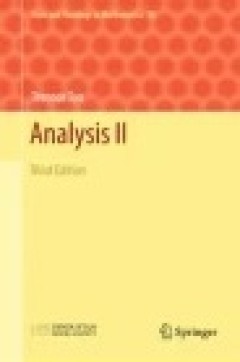
Analysis II: Third Edition
This is part two of a two-volume book on real analysis and is intended for senior undergraduate students of mathematics who have already been exposed to calculus. The emphasis is on rigour and foundations of analysis. Beginning with the construction of the number systems and set theory, the book discusses the basics of analysis (limits, series, continuity, differentiation, Riemann integration),…
- Edition
- Ed. 1
- ISBN/ISSN
- 978-981-10-1804-6
- Collation
- XVII, 220
- Series Title
- Texts and Readings in Mathematics
- Call Number
- 515 TAO a
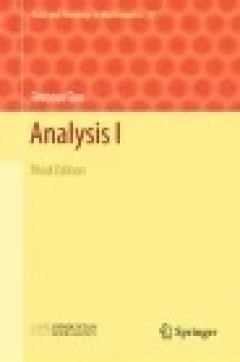
Analysis I: Third Edition
This is part one of a two-volume book on real analysis and is intended for senior undergraduate students of mathematics who have already been exposed to calculus. The emphasis is on rigour and foundations of analysis. Beginning with the construction of the number systems and set theory, the book discusses the basics of analysis (limits, series, continuity, differentiation, Riemann integration),…
- Edition
- Ed. 1
- ISBN/ISSN
- 978-981-10-1789-6
- Collation
- XIX, 350
- Series Title
- Texts and Readings in Mathematics
- Call Number
- 515 TAO a
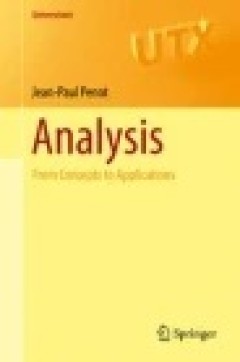
Analysis: From Concepts to Applications
This textbook covers the main results and methods of real analysis in a single volume. Taking a progressive approach to equations and transformations, this book starts with the very foundations of real analysis (set theory, order, convergence, and measure theory) before presenting powerful results that can be applied to concrete problems. In addition to classical results of functional analys…
- Edition
- Ed. 1
- ISBN/ISSN
- 978-3-319-32411-1
- Collation
- XXIII, 669
- Series Title
- Universitext
- Call Number
- 515.3 PEN a
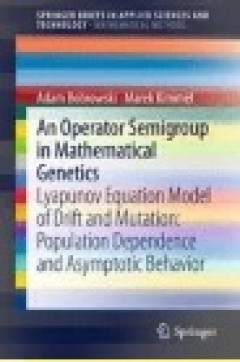
An Operator Semigroup in Mathematical Genetics
This authored monograph presents a mathematical description of the time evolution of neutral genomic regions in terms of the differential Lyapunov equation. The qualitative behavior of its solutions, with respect to different mutation models and demographic patterns, can be characterized using operator semi group theory. Mutation and drift are two of the main genetic forces, which act on gen…
- Edition
- Ed. 1
- ISBN/ISSN
- 978-3-642-35958-3
- Collation
- VI, 88
- Series Title
- SpringerBriefs in Applied Sciences and Technology
- Call Number
- 575.1 BOB o
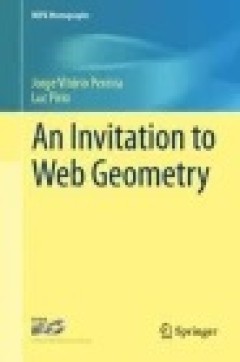
An Invitation to Web Geometry
This book takes an in-depth look at abelian relations of codimension one webs in the complex analytic setting. In its classical form, web geometry consists in the study of webs up to local diffeomorphisms. A significant part of the theory revolves around the concept of abelian relation, a particular kind of functional relation among the first integrals of the foliations of a web. Two main focus…
- Edition
- Ed. 1
- ISBN/ISSN
- 978-3-319-14562-4
- Collation
- XVII, 213
- Series Title
- IMPA Monographs
- Call Number
- 515.3 PER i

An Invitation to General Algebra and Universal Constructions
Rich in examples and intuitive discussions, this book presents General Algebra using the unifying viewpoint of categories and functors. Starting with a survey, in non-category-theoretic terms, of many familiar and not-so-familiar constructions in algebra (plus two from topology for perspective), the reader is guided to an understanding and appreciation of the general concepts and tools unifying…
- Edition
- Ed. 1
- ISBN/ISSN
- 978-3-319-11478-1
- Collation
- X, 572
- Series Title
- Universitext
- Call Number
- 512 BER i
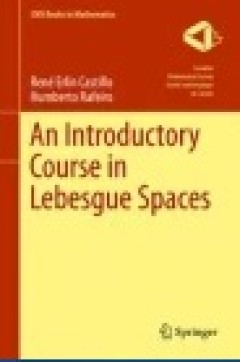
An Introductory Course in Lebesgue Spaces
This book is devoted exclusively to Lebesgue spaces and their direct derived spaces. Unique in its sole dedication, this book explores Lebesgue spaces, distribution functions and nonincreasing rearrangement. Moreover, it also deals with weak, Lorentz and the more recent variable exponent and grand Lebesgue spaces with considerable detail to the proofs. The book also touches on basic harmonic an…
- Edition
- Ed. 1
- ISBN/ISSN
- 978-3-319-30034-4
- Collation
- XII, 461
- Series Title
- CMS Books in Mathematics
- Call Number
- 515.7 CAS i
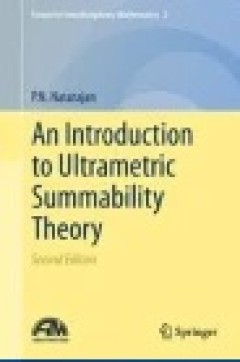
An Introduction to Ultrametric Summability Theory
This is the second, completely revised and expanded edition of the author’s first book, covering numerous new topics and recent developments in ultrametric summability theory. Ultrametric analysis has emerged as an important branch of mathematics in recent years. This book presents a brief survey of the research to date in ultrametric summability theory, which is a fusion of a classical branc…
- Edition
- Ed. 1
- ISBN/ISSN
- 978-81-322-2559-1
- Collation
- XIII, 159
- Series Title
- Forum for Interdisciplinary Mathematics
- Call Number
- 519.4 NAT i
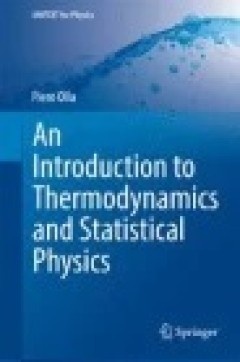
An Introduction to Thermodynamics and Statistical Physics
This textbook offers an advanced undergraduate or initial graduate level introduction to topics such as kinetic theory, equilibrium statistical mechanics and the theory of fluctuations from a modern perspective. The aim is to provide the reader with the necessary tools of probability theory and thermodynamics (especially the thermodynamic potentials) to enable subsequent study at advanced gradu…
- Edition
- Ed. 1
- ISBN/ISSN
- 978-3-319-06188-7
- Collation
- VII, 185
- Series Title
- UNITEXT for Physics
- Call Number
- 536.7 OLL i
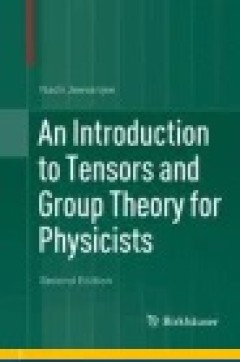
An Introduction to Tensors and Group Theory for Physicists
The second edition of this highly praised textbook provides an introduction to tensors, group theory, and their applications in classical and quantum physics. Both intuitive and rigorous, it aims to demystify tensors by giving the slightly more abstract but conceptually much clearer definition found in the math literature, and then connects this formulation to the component formalism of physics…
- Edition
- Ed. 1
- ISBN/ISSN
- 978-3-319-14794-9
- Collation
- XVI, 305
- Series Title
- -
- Call Number
- 530.1 JEE i
 Computer Science, Information & General Works
Computer Science, Information & General Works  Philosophy & Psychology
Philosophy & Psychology  Religion
Religion  Social Sciences
Social Sciences  Language
Language  Pure Science
Pure Science  Applied Sciences
Applied Sciences  Art & Recreation
Art & Recreation  Literature
Literature  History & Geography
History & Geography